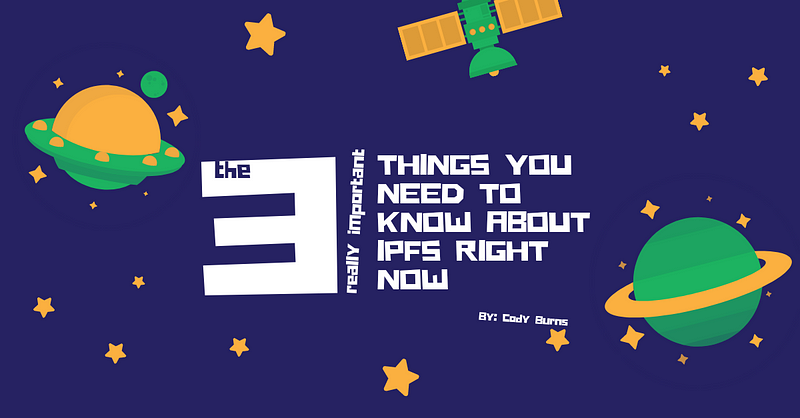
Part 1: Overview of ChipprAGI: Purpose, Goals, and Benefits
Introduction
Welcome to the first part of our blog series on ChipprAGI, a powerful, modular artificial general intelligence (auto GPT) JavaScript framework designed to enable the creation of complex applications in the fields of robotics and automation. At its core, ChipprAGI leverages the Entity-Component-System (ECS) architecture, which provides a highly flexible and scalable foundation for building AI-driven applications. In this installment, we’ll provide a high-level overview of the purpose and goals of ChipprAGI, its applications, and the benefits it provides to developers and users. This foundation will set the stage for the more in-depth exploration of ChipprAGI’s components and systems in the following blog posts.
TL;DR: Link to Repo
Entity-Component-System Architecture: The Basics
Before diving into the purpose and goals of ChipprAGI, it’s important to briefly introduce the basics of the Entity-Component-System (ECS) architecture. ECS is a software architectural pattern that promotes modularity and reusability by organizing application data and logic into three distinct categories:
- Entities: These are the individual objects in the application, such as characters, robots, or items in a supply chain. Entities are typically represented by unique identifiers and don’t contain any data or logic themselves.
- Components: Components are the modular building blocks that encapsulate data and attributes associated with entities. Components can be thought of as the “properties” of an entity, such as position, velocity, or health.
- Systems: Systems are responsible for implementing the logic and behavior of the application by processing entities with specific sets of components. They define how components interact with each other and how entities change over time.
By separating data and logic into components and systems, the ECS architecture enables developers to create highly modular and reusable code, making it easier to assemble and maintain complex applications.
Purpose and Goals of ChipprAGI
ChipprAGI was created with the aim of providing a flexible, scalable, and extensible architecture that simplifies the development of complex AI-driven applications. The primary goals of ChipprAGI are:
- To facilitate seamless integration of AI and machine learning technologies into application development, reducing the time and effort required to build intelligent solutions.
- To promote modular and reusable code through a well-defined component-based structure, enabling developers to leverage existing components and systems for their specific needs.
- To provide a customizable and extensible framework that can be easily adapted to suit various use cases and industries.
Potential Applications of ChipprAGI
ChipprAGI’s flexible architecture lends itself to a wide range of applications across multiple industries. Its modularity and ease of customization make it particularly well-suited for developing solutions that require advanced artificial intelligence and machine learning capabilities. Let’s explore some of the industries where ChipprAGI could have a significant impact.
Robotics is one area where ChipprAGI excels. By utilizing ChipprAGI’s powerful components and systems, developers can create advanced robotic solutions for a variety of applications. For instance, ChipprAGI can be employed to develop robotic control systems, computer vision algorithms, and navigation strategies, which are essential for building sophisticated robots in manufacturing and healthcare sectors. In manufacturing, these robots can perform tasks like assembly and quality inspection, whereas, in healthcare, they can be used to assist in surgical procedures or deliver medications to patients.
In the field of smart city management, ChipprAGI offers a versatile framework for building applications that optimize various aspects of urban planning and infrastructure. For example, developers can create intelligent solutions that improve traffic management, energy consumption, and waste disposal, ultimately leading to more efficient and sustainable urban environments. ChipprAGI-powered applications can help city planners to better manage resources, reduce pollution, and enhance the overall quality of life for residents.
Natural language processing is another domain where ChipprAGI’s capabilities shine. Thanks to its seamless integration with state-of-the-art language models like OpenAI’s GPT, developers can build applications that understand, generate, and analyze human language with ease. These applications can be used to enhance customer service, perform sentiment analysis, or generate high-quality content. For instance, a ChipprAGI-based application could be used by a company to analyze customer reviews and social media posts, helping them identify areas for improvement or potential market trends.
As demonstrated by these examples, ChipprAGI’s modular and extensible architecture is well-suited for a wide variety of applications across diverse industries. Its ability to harness the power of artificial intelligence and machine learning, coupled with its customizable nature, makes it an ideal choice for developers looking to create innovative and intelligent solutions.
Benefits of ChipprAGI
Building with the ChipprAGI framework offers numerous benefits to both developers and users, including:
Faster Development: ChipprAGI’s modular architecture enables developers to quickly assemble applications using pre-built components and systems, significantly reducing development time.
Scalability: The Entity-Component-System (ECS) architecture at the core of ChipprAGI ensures that applications can easily scale to handle increasing complexity and size.
Customizability: ChipprAGI allows developers to easily create their own components, systems, and integrations, tailoring the framework to meet their specific needs and requirements.
Interoperability: ChipprAGI’s standardized messaging and communication strategies enable seamless interaction between components and systems, promoting a cohesive and well-orchestrated application.
Conclusion
In this first installment of our ChipprAGI blog series, we provided an overview of the purpose and goals of ChipprAGI, some potential applications, and the benefits it offers to developers and users. With this foundation in place, we’ll dive deeper into ChipprAGI’s core components and systems in the following blog posts, providing a comprehensive understanding of this powerful, modular AI-driven software architecture.





































